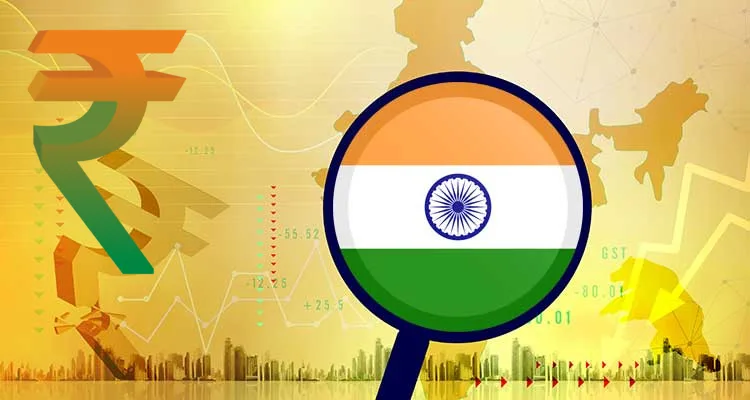GDP is an important rate in the economy of any country. It reflects a state’s “economic health” and other crucial aspects that influence each of its sectors. In this article, we will bring India’s GDP into focus and analyze its tendencies for the last several years.
First, let’s define what is GDP. Gross domestic product, or GDP, is the financial value of all ready-made products and services manufactured in a country during a certain time. To cut a long story short, it estimates national production and functions as an important metric.
It is worth mentioning that GDP is always under the observation of economists and other experts who are involved in the process of economic development. Moreover, it is often considered as the estimation of the level of the overall state’s economy.
As for the ways of calculating GDP, there is a special formula: consuming by individuals plus gross investments plus financing from the government plus net export revenue. In addition to a standard GDP type, there are also several other categories of this value, including nominal GDP, growth rate, etc.
Essential information about Indian GGP
It is a common fact that India has a developing market economy, which is the 5th biggest type in terms of GDP. As for India’s GDP, at the current time, the country occupies the 139th place by the nominal rate and 118th by PPP. According to recent financial news in India, it continues its positive trend in economic development, thanks to quite a big number of the young and working population. Although the country has had some leaps and slowdowns in its economy, it still has many sectors that allow it to stay afloat and even be ahead of many well-developed states. For example, it has recently outperformed France and Great Britain by showing better results and holds the course for the level of China and the US.
Here is the list of other important rates connected with GDP in India:
- Nominal per capita rate – 2338 dollars;
- Rates by sectors: industry – twenty-three percent, agriculture – 15.4 percent, services – 61.5 percent.
As the Indian economy is still among the fastest-growing ones and thanks to its strong agricultural sector, which has even increased by more than three percent, the country can maintain its development at the appropriate level. At the same time, it suffers from the decline in three important factors – consumption demand, export, and investments. Some experts say that the background for this has appeared earlier before the pandemic. However, it doesn’t mean that the coronavirus isn’t involved in the degradation as the lockdown has brought decline to many sectors. Though India’s economy experiences the slowing down process, experts predict its further growth.
Growth in Indian GDP for the last several years
As has been mentioned above, there are many predictions that, regardless of the temporary crisis, India will be able not only to regain previous GDP rates but will even increase them in 2025. Preliminary figures are almost ten-percent growth that is expected at the nearest time.
The reason for such a positive prognosis is India’s stable and persistent intention to be among the leaders in the global economic space. Although it isn’t included in the list of the countries that use the euro and is a non-EU state, the European Union and India have much in common. The economic strategy is one of these aspects. The union is an important trade partner for the country, and the GDP rate plays a significant role in these relationships.
During the last several years, India didn’t have continuous GDP positive growth. There were a lot of leaps caused by various inner and outer circumstances. Look at the table below.
| Year | GDP | Decline/Increase percentage |
| 2016 | 8.26 percent | 0.26% growth in comparison to 2015 |
| 2017 | 7.04 percent | 1.21% decline in comparison to the previous year |
| 2018 | 6.12 percent | 0.92% decrease from the previous year |
| 2019 | 5.02 percent | 1.1% decrease in comparison to 2018 |
If to look at the Indian GDP chart, it is obvious that this value has been experiencing a constant decline for the last three years. However, to understand the situation with GDP clearer, let’s consider its rates by the regions.
Ranking of Indian states by GDP
India, as a union, consists of twenty-eight states with different economic levels. It means that their GDP rates differ as well: some regions are more prosperous, others lack economic stability. For example, 5 states of the country generate approximately thirty percent of the overall amount of gross domestic product. Of course, they are the main supporters of India’s economy that has been damaged by the pandemic and lockdown significantly.
According to the recent reports, the current rates of nominal GDP in some states are the following (2023-2024):
- Maharashtra – 420 bln dollars;
- Tamil Nadu – 290 bln dollars;
- Karnataka – 220 bln dollars;
- West Bengal – 180 bln dollars;
- Madhya Pradesh – 130 bln dollars;
- Haryana – 120 bln dollars;
- Odisha – 76 bln dollars.
Karnataka (220 billion dollars), Kerala (140 billion dollars), Tamil Nadu (290 billion dollars), Punjab (73 billion dollars), Haryana (130 billion dollars) are the most fast recovering states after the lockdown. They were among the first who returned to normal life and started to grow the GDP rate.
Read more: Best iGaming Aggregators













